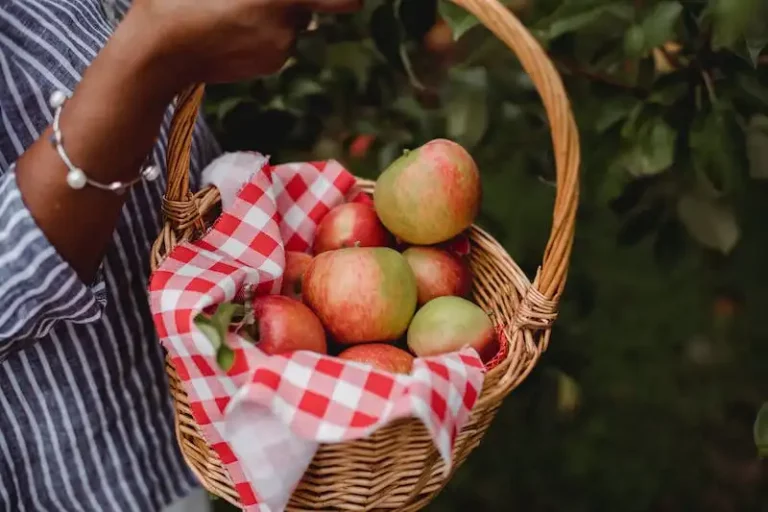If you are just starting your gardening journey or already have a fruitful garden, knowing which plants to grow together can greatly benefit your crop. Following the principles of companion planting can lead to healthier plants, increased productivity, and naturally pest-resistant gardens. Cucumbers, although they thrive on their own, can greatly benefit from the presence of certain companion plants.
Similarly to humans, plants have their own preferences and habits. By carefully choosing companion plants for your cucumbers, you can ensure that they grow evenly and draw upon the strengths of their neighbors. While there are many choices available, we have compiled a list of the top 10 companion plants that you should consider planting next to your cucumbers.
In the number one spot, we have the versatile and prolific nasturtium. Not only does nasturtium add a beautiful splash of color to your garden, but it also acts as a natural pest repellent and improves the overall health of your cucumbers. Another great choice is the allium family, including chives, garlic, and onions. These plants repel pests and attract beneficial insects, while also enhancing the flavor of your cucumbers.
Spinach, bell peppers, and turnips are all wonderful options as well. Spinach, with its shallow roots, can coexist harmoniously with cucumbers without competing for nutrients. Bell peppers act as a natural trellis for cucumbers, providing support for their climbing habit. Turnips, on the other hand, help keep the soil loose and aerated, creating an ideal environment for cucumber roots.
Sage is another companion plant that should not be overlooked. It not only enhances the flavor of cucumbers but also repels pests and attracts beneficial insects. Additionally, planting cucumbers next to potatoes and dill can increase their yield, as these plants naturally repel pests that commonly attack cucumbers.
Lastly, marigolds, lettuce, snap peas, and borage are all great choices for companion planting with cucumbers. Marigolds repel harmful insects, while lettuce provides shade and moisture retention for cucumber roots. Snap peas act as a natural trellis, improving air circulation and reducing the risk of disease. Borage, with its small beautiful flowers, is a prolific pollinator and attracts important pollinators that benefit your cucumbers.
In conclusion, choosing the right companion plants for cucumbers can greatly enhance their growth and overall health. By planting a diverse range of herbs, vegetables, and flowers, you can create a balanced and thriving garden ecosystem. So why not save space, increase your yield, and have a more beautiful garden by companion planting with cucumbers? Try these recommendations and see the wonderful benefits for yourself!
Cucumber Companion Plants: What’s Good, Bad, and Best
When it comes to growing cucumbers in your garden, choosing the right companion plants is crucial. Certain plants can have a positive impact on cucumber growth and health, while others can be harmful. Let’s explore what’s good, bad, and the best companion plants for cucumbers.
Good Companion Plants:
1. Sunflowers: Sunflowers provide shade to cucumber plants, helping to keep their roots cool. They also attract pollinators, which aid in cucumber plant growth.
2. Chives: Chives repel cucumber beetles, pests that can damage cucumber crops. Planting chives near cucumbers can help protect them from these destructive insects.
3. Marigolds: Marigolds deter pests and attract beneficial insects, making them an excellent companion for cucumbers. They also add beauty to the garden.
4. Dill: Dill attracts beneficial insects like ladybugs, which feed on cucumber beetles. Planting dill near cucumbers can help control pest populations.
5. Kale: Kale plants can provide shade to cucumbers during hot summer months. They also have a similar growth habit, making them compatible companions.
Bad Companion Plants:
1. Corn: Corn and cucumber are both heavy feeders, and planting them together can deplete the soil’s nutrients. It’s best to separate these crops in your garden.
2. Sugar Snap Peas: Sugar snap peas attract cucumber beetles, which can lead to disease transmission. It’s better to keep them away from cucumber plants.
3. Brassicas: Brassicas, such as cabbage and broccoli, release compounds that can inhibit cucumber growth. It’s advisable to avoid planting them nearby.
Best Companion Plants:
1. Nasturtiums: Nasturtiums not only add beauty to your garden but also repel pests like aphids and cucumber beetles. Planting them alongside cucumbers can provide a protective barrier.
2. Solanum: Solanum plants, like tomatoes and peppers, are compatible with cucumbers. They help deter pests and provide some shade without competing for space.
3. Bell peppers: Bell peppers have similar growth requirements to cucumbers and can be planted together. They can also provide some shade to cucumber plants.
4. Beans: Beans fix nitrogen in the soil, which cucumbers can benefit from. Planting beans near cucumbers can improve their growth and overall health.
It’s important to consider the benefits and drawbacks of each companion plant when planning your cucumber garden. By choosing the right companions, you can create a harmonious and thriving garden ecosystem.
Photo source: Cornell University Botanical Gardens
Best Cucumber Companion Plants
When it comes to growing cucumbers in your garden, choosing the right companion plants can greatly benefit their growth and ward off diseases. Companion planting involves growing different species of plants together for mutual benefits. Here is a list of 10 companion plants that work best with cucumbers:
| 1. Marigolds: | Marigolds not only add a pop of color to your garden, but they also help repel pests and attract pollinators. |
| 2. Beans: | Beans are a great option to grow alongside cucumbers as they help improve nitrogen levels in the soil and provide natural shade for the cucumbers. |
| 3. Corn: | Growing corn next to cucumbers can create a natural trellis for the cucumber plants to climb on. |
| 4. Peas: | Peas are another legume that helps with nitrogen fixation, making them a perfect companion for cucumbers. |
| 5. Tomatoes: | Tomatoes and cucumbers are a classic combination in many dishes, and they also make great companions in the garden. Tomatoes provide shade for the cucumbers and help deter pests such as aphids. |
| 6. Herbs: | Growing herbs like basil, dill, and oregano near cucumbers not only adds extra flavor to your dishes but also helps repel pests and attracts beneficial insects. |
| 7. Brassicas: | Growing brassicas, such as kale and cabbage, near cucumbers can help deter pests and balance the ecosystem in your garden. |
| 8. Sunflowers: | Sunflowers are known for their tall height and wide-spreading leaves, which provide shade for cucumbers. |
| 9. Beets: | Beets are a small root vegetable that grows well with cucumbers. They help improve soil quality and add a touch of sweetness to the taste of cucumbers. |
| 10. Spinach: | Spinach is a cool-season vegetable that can be harvested before cucumbers take up too much space. It also helps provide shade and acts as a natural mulch. |
These companion plants not only benefit the growth and flavor of cucumbers but also help deter pests, increase pollinators, and improve soil quality. They provide a natural balance in the garden and can even act as a form of therapy for those interested in gardening. So, consider incorporating some of these companion plants in your cucumber garden for a successful and bountiful harvest.
Tip
Planting companion crops is a perfect way to meet the needs of your cucumbers while saving space in your garden. By choosing the right companion plants, you can create a beneficial ecosystem that helps your cucumbers thrive.
| 1. Beets | Planting beets alongside your cucumbers can help deter pests like aphids and beetles. Their deep roots also help loosen the soil for the cucumber plants. |
| 2. Spinach | Spinach is a great companion for cucumbers as it helps shade the soil, keeping it cool and preventing weed growth. Its high nitrogen content also benefits the cucumber plants. |
| 3. Peppers | Peppers and cucumbers have similar growing needs, making them good companions. Peppers also benefit from being shaded by the cucumbers’ large leaves. |
| 4. Dill | Planting dill near cucumbers can attract beneficial insects like ladybugs and lacewings, which help control pests. Dill also adds a wonderful flavor when used in pickling cucumbers. |
| 5. Sage | Sage has a similar growth habit to cucumbers and can help deter pests like cucumber beetles. It is also a good choice for fall planting. |
| 6. Nasturtiums | Nasturtiums not only add a pop of color to your garden but also help repel pests like aphids and squash bugs. They are also a favorite companion plant for melons. |
| 7. Allium | Allium plants, such as onions and garlic, can help deter pests and reduce the risk of fungal diseases for cucumbers. They are also known for their wide range of culinary uses. |
| 8. Oregano | Oregano is a beneficial companion plant for cucumbers as its strong scent can deter pests. It is also a hardy herb that thrives in well-draining soil. |
| 9. Potatoes | Planting potatoes with cucumbers can help increase the yield of both crops. Potatoes also provide a natural mulch that helps conserve moisture in the soil. |
| 10. Marigolds | Marigolds are a popular companion plant for cucumbers due to their prolific blooming nature. They attract beneficial insects while deterring harmful pests like nematodes. |
By having these companion plants in your garden, you can enjoy the benefits of increased yield, pest control, weed suppression, and a flourishing ecosystem. Don’t miss out on the advantages of companion planting!
What Is Companion Planting
Companion planting is the practice of growing different plants together in a way that benefits each other. It involves planting two or more plants in close proximity, taking advantage of their different characteristics to create a mutually beneficial relationship.
The concept of companion planting is not a new one. Gardeners have been using this technique for centuries to maximize the potential of their crops. By choosing the right companions, gardeners can enhance the flavor, growth, and overall health of their plants.
One popular example of companion planting is growing cucumbers and zucchini together. Cucumbers and zucchini are both members of the Cucurbitaceae family, which makes them good companions. They have similar growth habits and requirements, and they can help each other by providing shade, support, and pest control.
Companion planting also helps in pest management. For example, planting herbs like chamomile and dill near cucumbers can attract beneficial insects that prey on pests. This natural pest control method can reduce the need for chemical pesticides.
In addition to pest control, companion planting can also improve soil health and fertility. Some plants have the ability to fix nitrogen in the soil, which is essential for proper plant growth. For instance, legumes like peas and beans can promote nitrogen fixation and provide a valuable nutrient source for plants like cucumbers.
Companion planting can also be used to prevent diseases. Certain plants have the ability to repel pests or suppress the growth of pathogens. For example, planting marigolds near tomatoes can help prevent diseases like fusarium wilt, while planting onions near carrots can deter carrot flies.
Another important aspect of companion planting is crop rotation. By rotating the types of plants grown in a specific area, gardeners can prevent the buildup of pests and diseases. For instance, planting tomatoes, peppers, and eggplants in the same spot each year can lead to a buildup of diseases that affect these plants. By rotating them with different plant families, such as leafy greens or legumes, gardeners can break the disease cycle and maintain a healthy garden.
Overall, companion planting is a valuable technique for any garden. It can improve crop health, increase harvest yields, attract pollinators, and enhance the overall beauty of the garden. Whether you are an organic gardening enthusiast or just interested in maximizing the potential of your plants, companion planting is definitely something worth considering.



